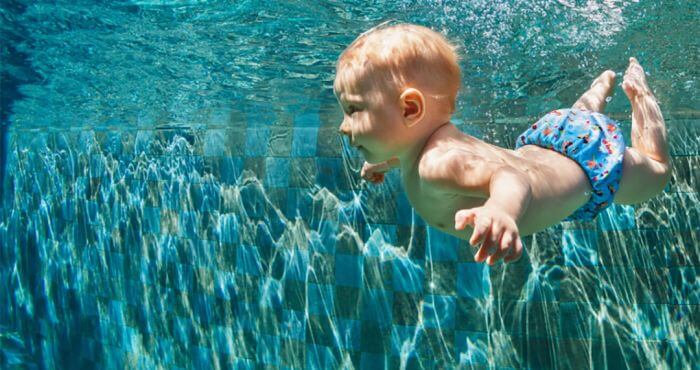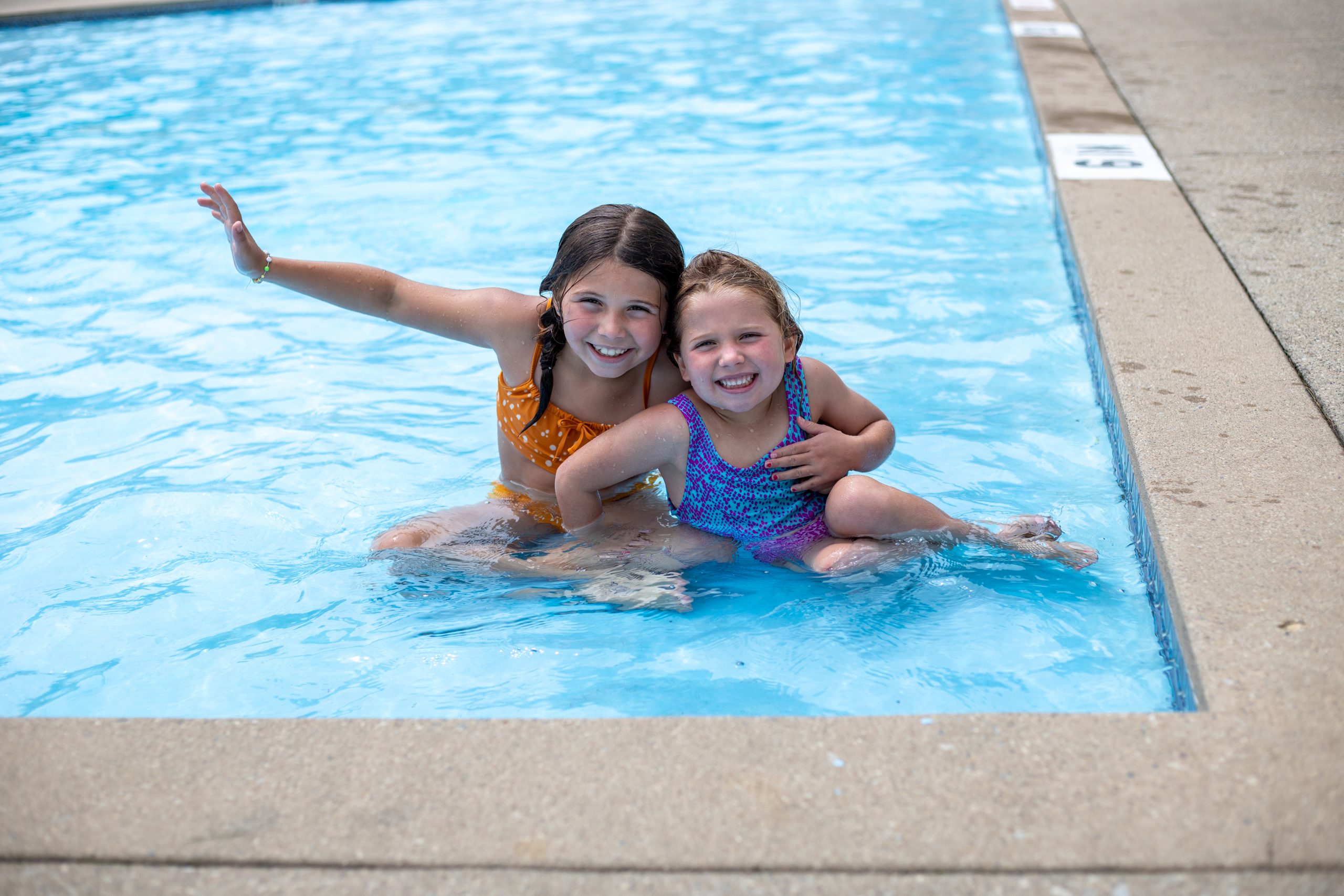Swim diapers are designed for water use and do not absorb like regular diapers. Regular diapers swell up and become heavy when wet, which swim diapers prevent.
Choosing the right diaper for your baby’s aquatic adventures is crucial. Swim diapers and regular diapers serve distinctly different purposes. Swim diapers are specifically made to contain solid waste and resist water, ensuring minimal absorption, so they won’t swell like regular diapers.
This makes them essential for pool time, as they keep accidents contained without becoming sodden and uncomfortable. On the other hand, regular diapers are highly absorbent, designed for everyday use to keep your baby dry by soaking up urine and containing feces. They’re unsuitable for swimming, as they quickly become waterlogged, potentially weighing down your little one. Understanding these differences helps you equip your baby appropriately for a comfortable and hygienic swim.
Swim Diaper Vs Regular Diaper: Ultimate Poolside Guide
Understanding the need for specialized diapers by the pool is crucial when planning a day out with your little one. Swim diapers and regular diapers are designed for different purposes. The main distinction lies in their ability to handle liquids. Swim diapers are specifically crafted to withstand water, preventing swelling and maintaining their shape and fit. In contrast, regular diapers are highly absorbent, designed to soak up moisture and keep the baby dry on land.
Swim diapers boast non-absorbent materials that trap solids while allowing water to pass through easily. This makes them ideal for pool use, as they help avoid waterlogging and the resulting discomfort. Regular diapers, with their absorbent cores made from materials like cotton and superabsorbent polymers, are unsuitable for water use as they become bulky and can even disintegrate.
| Feature | Swim Diaper | Regular Diaper |
|---|---|---|
| Absorbency | Low (only solids) | High (liquids and solids) |
| Design for Water | Yes | No |
| Swelling in Water | No | Yes |
| Material | Non-absorbent fabric | Cotton, Superabsorbent polymers |
Choosing The Right Diaper For Water Play
Choosing the correct diaper for water activities necessitates putting a premium on both fit and comfort. Traditional diapers, being highly absorbent, swell up and become cumbersome in the water, whereas swim diapers are designed to withstand saturation. The snug fit of a swim diaper is crucial as it prevents leakage, keeping potential accidents contained. This containment is not only necessary for hygiene but also for public pool compliance.
Ensuring a non-restrictive and comfortable diaper experience for a child is imperative; otherwise, it could lead to skin irritation or chafing. A diaper that fits well and satisfies your child’s comfort needs is essential for an enjoyable time in the pool or at the beach. The right selection allows little ones to move freely and happily while engaging in water play.
Design And Functionality Of Swim Diapers
Swim diapers are uniquely designed to offer the same protection as regular diapers but with distinct elements that make them suitable for water use. One of the most critical features of swim diapers is their ability to prevent leaks while not swelling up like traditional diapers. Unlike regular diapers, which quickly saturate and expand upon contact with water, swim diapers are made with materials that do not absorb large amounts of liquid. This ensures that they remain slim and comfortable for little swimmers even when immersed.
The design of swim diapers aims to contain solid waste effectively, while allowing liquids to pass through without becoming heavy and cumbersome. They often come with snug-fitting waists and leg holes to ensure a secure fit, minimizing the risk of any accidental release into the water. The use of advanced materials and innovative design features means that swim diapers are an essential item for any water-based activities with infants or toddlers.
Regular Diapers Under The Microscope
Regular diapers are designed to be highly absorbent and retain your baby’s waste while keeping them dry on land. These diapers utilize a complex material composition including a core of superabsorbent polymers (SAP) which can hold many times their weight in liquid. This core is surrounded by a layer of soft, absorbent paper padding and a snug-fitting, waterproof outer shell to prevent leaks. The breathable material also helps to keep the baby’s skin dry and prevents rashes.
The functionality of regular diapers takes a turn once they are submerged in water. The SAP core that works efficiently on dry land to soak up liquids quickly becomes saturated in a water-filled environment. This leads to the diaper swelling immensely, becoming bulky and uncomfortable. With increased weight, there’s a risk of the diaper sagging or even slipping off, which compromises its ability to contain waste. Additionally, the absorbent layer can tear after swelling, releasing the SAP material into the pool.
Health And Safety Considerations
Protecting a baby’s skin during swimming sessions is pivotal. Swim diapers are designed to offer superior protection compared to regular diapers. With materials specifically crafted to withstand water, these diapers prevent swelling and disintegration, ensuring your baby’s skin remains irritation-free and their comfort is sustained. Unlike regular diapers, swim diapers have snug cuffs around the legs and waist, which guard against chafing and secure the skin’s health.
As for reducing the risk of pool contamination, choosing the right diaper is essential. Swim diapers are uniquely engineered to contain solids without absorbing the surrounding pool water. This critical feature means that they are significantly more effective in preventing bacterial spread, such as E. coli, in pools and aquatic environments. Regular diapers could easily become saturated, leading to an increased risk of leakage and pool contamination, thus undermining public health and safety.
Practical Aspects Of Swim Diapers
Swim diapers are designed with materials that can withstand water without becoming bloated. This feature makes them reusable as they can be washed and worn multiple times, which is beneficial to the environment by reducing waste. On the other hand, regular diapers are typically single-use and contribute more to landfill. Regarding availability, both types of diapers are widely available in stores and online; however, swim diapers are often priced higher due to their specialized design and materials.
| Aspect | Swim Diapers | Regular Diapers |
|---|---|---|
| Reusability | High (washable) | Low (single-use) |
| Eco-friendliness | Better (reduced waste) | Poorer (more waste) |
| Availability | Widely available | Widely available |
| Cost | Generally higher | Lower (per unit) |
Comfort And Fit For Little Swimmers
Swim diapers are specifically designed to offer a snug fit, which is crucial for containing messes without absorbing pool water. This snugness ensures that the diaper stays in place, preventing leaks and keeping the swimming environment clean. Unlike regular diapers, which can become saggy and uncomfortable when wet, swim diapers are made to withstand immersion.
Children must experience unhindered mobility while paddling and kicking in the water. Swim diapers are constructed with materials that provide a stretchable yet secure fit, optimizing a child’s ability to move freely and comfortably. The right fit plays a significant role in learning to swim, as it does not restrict leg movements, thus aiding in skill development. Thus, choosing the proper swim diaper is essential for both hygiene and the swim experience.
User Experiences And Recommendations
Many parents have shared their experiences with both swim diapers and regular diapers during pool outings. A common tale involves a regular diaper swelling up and becoming heavy, making it uncomfortable for the baby. On the other side, some have praised swim diapers for being lightweight and less absorbent of water, preventing the saggy diaper scenario.
One parent narrated an episode where a swim diaper successfully contained a mess during swim lessons, while another recounted a near miss at a public pool with a regular diaper. These stories underscore the importance of choosing the right diaper for water activities.
- Check the pool rules – some require swim diapers for babies.
- Test the swim diaper – do a “dry run” at home to ensure a good fit.
- Bring extras – have a backup swim diaper and a regular diaper for after swimming.
- Clean promptly – change the baby immediately after swimming to avoid rashes.
Maintenance And Care For Swim Diapers
To ensure optimal performance and hygiene, proper cleaning and storage of swim diapers are crucial. After use, rinse the swim diaper in cold water to remove chlorine or salt, which can deteriorate the fabric. Turn the diaper inside out and conduct a gentle machine wash with a mild detergent. To preserve the elasticity and shape, avoid fabric softeners and high-heat drying; air-drying is recommended.
Storing swim diapers in a cool, dry place away from direct sunlight maintains their quality. Proper maintenance prevents the breakdown of materials, ensuring prolonged durability. Consistent care will extend the life span of swim diapers, making them a more sustainable option compared to regular diapers for water activities.
Navigating Public Pools And Swim Diapers
Public swimming spots demand specific hygiene protocols to ensure the wellness of all swimmers. Parents must adhere to the strict use of swim diapers for their little ones. Unlike regular diapers, swim diapers are designed not to swell up in water, providing a snug fit that prevents leaks. It’s essential to check the pool’s rules and regulations before diving in, as some may require a specific type of swim diaper.
Your swim diaper kit should include waterproof reusable swim diapers or enough disposable swim diapers for multiple changes, a wet bag for dirty diapers, a change of clothes, and skin protection like sunscreen and rash cream. Remember, regular diapers are not suitable for swimming, as they can disintegrate in the water and cause sanitary issues.
Transitioning Between Diapers Types
Switching from regular to swim diapers should occur as your baby begins to engage in water activities. Signs that your baby might need swim diapers include frequent visits to pools, beaches, or any water body where there is a likelihood of the child entering the water. It’s essential for the health and comfort of your baby and compliance with public pool regulations.
Regular diapers are not designed for swimming, as they swell up and become waterlogged, which can lead to leakage and discomfort for your baby. Swim diapers, on the other hand, are made to withstand immersion in water. They provide a snug fit and are made with materials that do not absorb water excessively, reducing the risk of accidents in the pool. Parents should make the transition as soon as water play becomes routine.

Credit: thewriggler.com
Frequently Asked Questions Of Swim Diaper Vs Regular Diaper
What Distinguishes A Swim Diaper?
Swim diapers are designed to retain solids while letting liquid pass through. Regular diapers, on the other hand, absorb all moisture, swelling up, and becoming ineffective in water. Swim diapers are essential for pool hygiene and mandatory in public pools.
Can Swim Diapers Hold Urine?
Swim diapers are not made to absorb urine. They are made to contain fecal matter and prevent it from entering the pool. In water, they do not swell like regular diapers, thus allowing for more comfortable swimming for babies.
Are Swim Diapers Reusable?
Yes, there are reusable swim diapers available. They are washable and can be used multiple times. Reusable swim diapers are eco-friendly and cost-effective compared to disposable ones, making them a popular choice for many parents.
How Often Should I Change Swim Diapers?
Unlike regular diapers, swim diapers should be checked and changed frequently, ideally every 30-60 minutes. It’s especially important to change a swim diaper immediately if it’s soiled to maintain sanitary conditions in the swimming area.
Conclusion
Deciding between swim diapers and regular diapers depends on your needs. For water play, swim diapers are essential, as they’re designed not to swell. On dry land, stick with regular diapers for absorbency. Choose wisely to keep your little one comfortable and happy during all activities.

Dr. Leah Alexander, M.D., is a board-certified Pediatrician in New Jersey and has been working at Elizabeth Pediatric Group of New Jersey since 2000. Since 2005, Dr. Alexander has worked as an independently contracted pediatrician with Medical Doctors Associates at Pediatricare Associates of New Jersey.
She also has a passion for culinary arts that extends beyond the medical realm. After completing culinary school at the French Culinary Institute, she started Global Palate, LLC, a catering firm, in 2007. She ran her own catering company for six years and served small group parties as an owner and executive chef.

